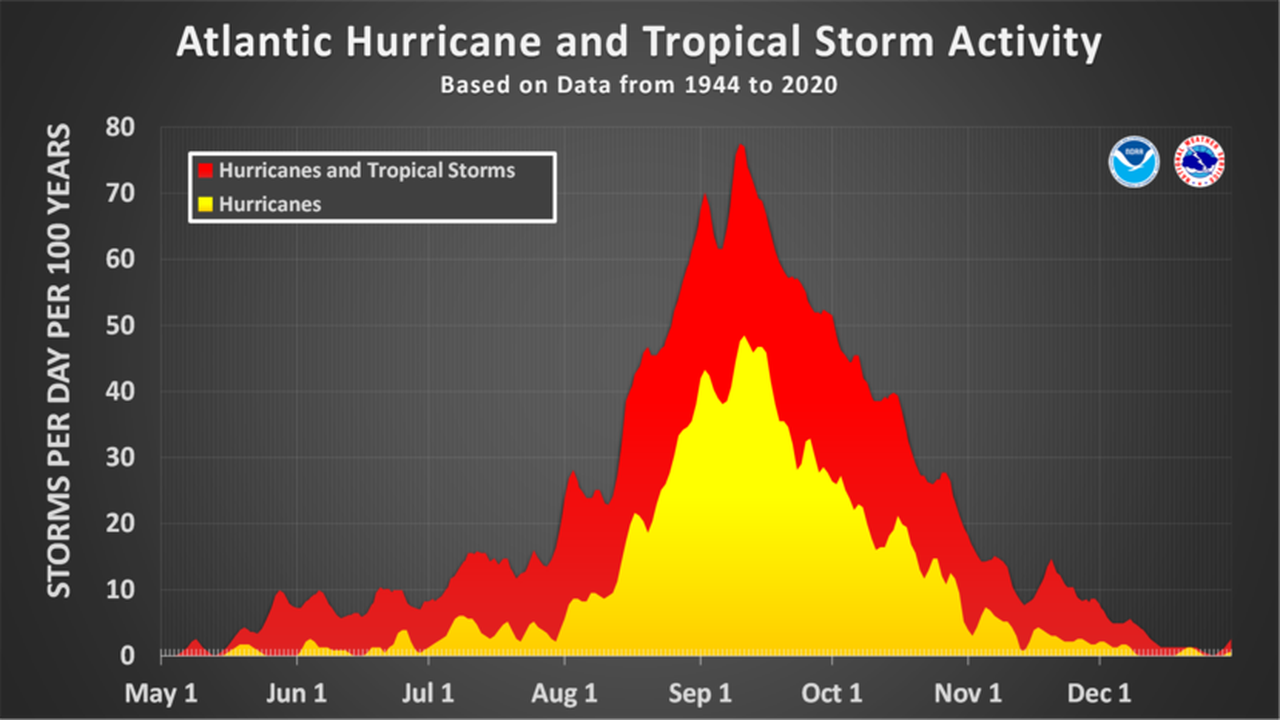Hurricane season 2023: Itâs showtime in the Atlantic
Today, June 1, is the first official day of the Atlantic hurricane season.
The season runs for the next six months, officially ending on Nov. 30. The Atlantic basin includes the Caribbean and the Gulf of Mexico.
The big question that everyone wants to know — and meteorologists don’t want to be asked — is whether it will be an active season.
NOAA released its pre-season hurricane outlook for the Atlantic last week and said its forecasters are expecting a near-normal season.
NOAA’s outlook suggests there could be 12-17 named storms (that includes tropical storms and hurricanes), five to nine hurricanes and one to four major hurricanes (Category 3 or stronger storms).
According to NOAA, an average season in the Atlantic basin has 14 named storms, seven hurricanes and three major hurricanes.
Forecasters are expecting El Nino to develop in the Pacific, and the climate phenomenon could shape worldwide weather patterns — and the Atlantic hurricane season. El Nino typically causes more wind shear in the Atlantic basin, which can tear tropical storms apart before they have the chance to get going.
However, the Atlantic is also warmer than average in some areas, and that could offset some of El Nino’s effects. NOAA also pointed out the possibility of a busier-than-average monsoon season in Africa, which could send more disturbances into the eastern Atlantic that could develop into tropical storms.
That’s why NOAA isn’t betting on a slower-than-average season in 2023, and that’s why meteorologists urge those along the coast to go ahead and get ready, just in case.
Get your house and yard storm-ready, check up on your insurance and make an emergency plan in case Alabama finds itself under the gun again.
The last time Alabama suffered a direct hit from a hurricane was Category 2 Hurricane Sally in September 2020.
The Atlantic hurricane season typically starts out slow and picks up steam later in the summer, reaching a climatological peak on Sept. 10.
The Atlantic hurricane season typically peaks in September.
Will that be the case again in 2023? Maybe. The National Hurricane Center was already watching an area of disturbed weather in the Gulf of Mexico that had a low chance of developing into a tropical depression or storm.
The system was expected to eventually move across the Florida Peninsula and into the southwestern Atlantic, but it could raise the risk of rip currents today along the Alabama coast, according to the National Weather Service in Mobile.
A tropical system has to have a defined center of circulation and winds of at least 39 mph to become a tropical storm and get a name. The first name on the 2023 list of hurricane names is Arlene.
